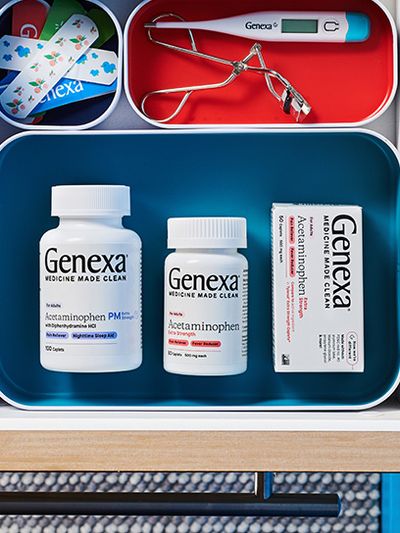Throbbing Headache: Symptoms, Causes, and Relief
How To Deal With A Throbbing Headache
Table of contents:
So, you or your child are suffering from a throbbing headache, and your first instinct is to panic.
Though painful headaches can be a little bit worrying, they are often nothing to worry about too much, and in any event, your doctor will be able to answer your questions or calm your fears.
When it comes to treating your headache, the right treatment plan for you will depend on what kind of headache you are experiencing… and it might be tough to figure this out until you do a little more digging. This is your complete guide to easing a throbbing headache, and how you can determine what is causing your pain.
Most Common Causes of Headaches with Throbbing Pain
Headaches come in many different shapes and sizes, and they can be caused by a multitude of factors. Throbbing headaches may actually be more common than you think, which might put some of your worries to rest.
When you have a throbbing headache, you are most likely dealing with a migraine, and believe it or not, migraines have a tendency to run in the family. This means that kids who have migraines most likely also have at least one parent who deals with migraines.
In fact, children with a parent suffering from migraines are up to four times more likely to end up battling migraines, too. Thus, your family medical history can certainly be one possible cause of your throbbing headaches.
That said, migraines and other headaches can also be caused by simpler factors that you may be able to control.
Common causes of headaches include:
- Eating certain foods that are known to trigger headaches, like caffeine, chocolate, alcohol, processed meats, aged cheese, and soy products
- Being exposed to certain allergens
- Secondhand smoke
- Strong odors from perfumes or chemical products
- Alcohol
- Dyhydration
- Changes in your eating or sleeping patterns
- Depression
- Emotional stress
- Excessive medication use, or use of medications that cause headaches as a side effect
- Eye, neck, or back strain that can be caused by poor posture
- Harsh lighting
- Loud noises
- Menstrual cycle
- Changes in weather and barometric pressure
All of these things play a part in the frequency and severity of your headaches, and if you can easily identify some factors on this list that you frequently encounter, you may be able to make some lifestyle changes to help reduce your headaches.
Different Types of Headaches
Though throbbing pain is most often associated with migraine headaches, there are several other types of headaches that are worth mentioning. Headache pain feels a little bit different to different people, and it can sometimes be hard to figure out exactly which type of headache you are experiencing… especially if your child is the one with the headache.
Tension Headaches
Tension headaches are the most common type of headache that people experience, and the pain caused by tension headaches is typically dull and feels like squeezing pain on both sides of the head, the base of the skull, or around the forehead. Tension headaches can also cause your neck and shoulders to hurt, and this kind of headache is often triggered by stress, fatigue, poor posture, or strain on the muscles in your neck and shoulders.
Migraine Headaches
Migraines are still a very common type of headache, but the pain they cause is more severe than that of a tension headache. Most often, migraine headaches start in the evening or while you are asleep, meaning you will wake up with the pain. Migraines are characterized by pulsating, throbbing pain, pain in one side of the head, a headache that lasts for a day, nausea and vomiting, and disabling intensity. They can even be associated with what is called an aura, which means that someone will see stars or smell something just before the headache starts.
Cluster Headaches
Cluster headaches are very rare, but when they happen they are extremely painful. Cluster headaches are called this because they come in clusters, with one to eight headaches happening every day for a certain period of time. Similar to migraines, the pain is one-sided, but a distinguishing characteristic of cluster headaches is that the eye on the affected side will become red and watery and the eyelid may droop.
Headaches Caused by Illness
Headaches can also be caused by different types of illnesses or infections. The common cold, for example, can cause minor headaches, and sinus infections can cause moderately painful headaches. If you think your headache is being caused by a cold or other illness, you may be able to treat your symptoms at home, but it is a good idea to consult a doctor for more guidance.
When To Call Your Doctor
Though rare, some headaches are a sign that something is seriously wrong with your body, and you may need medical attention. Knowing the signs and symptoms of something more serious will help you recognize when help is needed.
You should call a doctor if:
- There is a major change in the pattern of your headaches
- You are having an unusually severe headache
- Your head pain increases when you cough or move
- Your headache grows steadily more painful
- You experience changes in personality or mental function
- Your headache is accompanied by fever, stiff neck, confusion, decreased alertness, loss of memory, visual disturbances, slurred speech, numbness, weakness, or seizures
- Your headache comes along with a painful, red eye
Different Headaches Require Different Treatment: How to Relieve Your Pain
When it comes to treating your headache and finding relief, there are a few different approaches you can take.
Tension headaches are generally relieved with some OTC pain medications, heat, and massage. You may also want to try out methods of coping with and reducing stress in your life if tension headaches are a frequent problem.
Migraine headaches require a bit more in order to find relief.
To ease the pain of a migraine headache, you should:
- Rest in a dark, quiet room -- this means turning the lights out, closing the curtains, and taking it easy
- Place a hot or cold compress on your head and neck
- Drink more water
- Massage your head and try a small amount of caffeine, which can sometimes ease the pain. Many OTC migraine medications have caffeine in them
- Try an OTC pain reliever, especially if it is formulated for migraines
If migraines are a frequent problem or if you cannot find a way to get some relief, you should consult a doctor, because they may prescribe you pain relievers or preventative medications that will help keep you from falling victim to more migraines.
For the most part, any type of headache can be pretty easily treated with some pain medicine, water, and a little bit of rest. That said, if your headache does not respond to treatment or lasts for more than a day or two, this is a sign that you should call your doctor for further guidance.
The Bottom Line
When you are dealing with a throbbing headache, the pain can be extremely uncomfortable and you probably want relief fast. Throbbing headaches are most likely migraine headaches, which can cause intense, disabling pain and usually last between 4 and 24 hours. Treatment for migraines consists of resting in a dark and quiet room and taking an OTC pain reliever.
It is possible that another type of headache may cause throbbing pain, but most headaches are treatable with some pain medication or a hot or cold compress. Headaches that do not respond to treatment are a sign that you should get in touch with your doctor to make sure nothing is seriously wrong. Regardless, your doctor will be able to help you figure out what your next steps should be.
It is important to keep in mind that the specific treatment plans for each type of headache is a little bit different, so if you are not sure what kind of headache you are experiencing, it may be a good idea to talk to your doctor about your symptoms.






